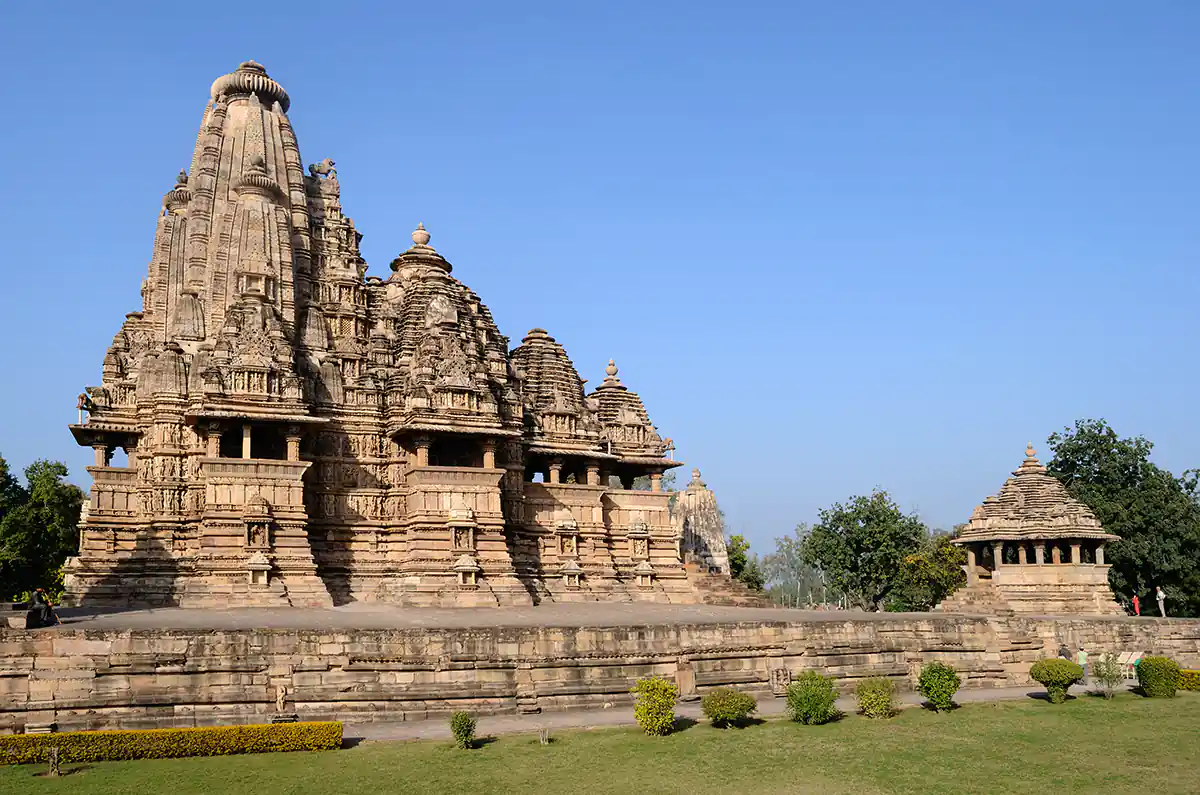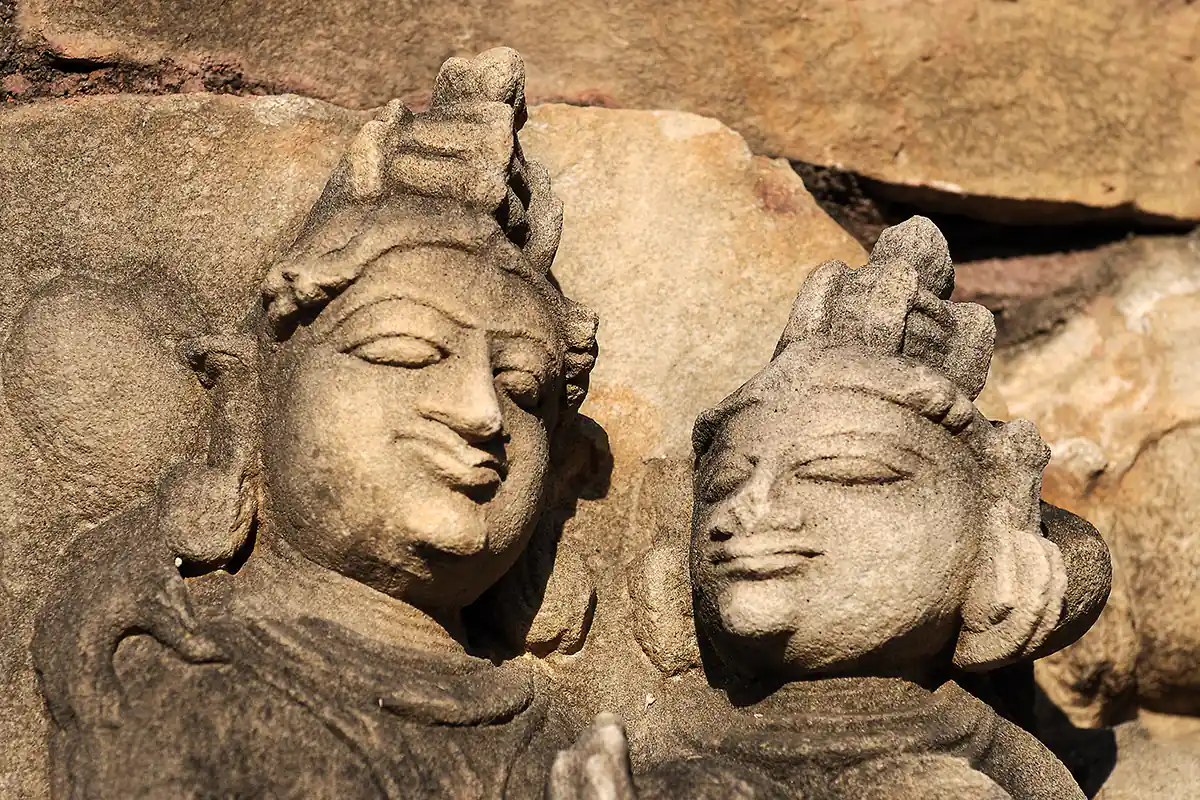Khajuraho
Located in the Indian state of Madhya Pradesh and roughly 620 kilometers (385 miles) southeast of New Delhi, the temples of Khajuraho are famous for their so-called “erotic sculptures.” Khajuraho was the cultural capital of the Chandela Rajputs, a Hindu dynasty that ruled from the 10th to 12th centuries. There were originally more than 80 Hindu and Jain temples, but only 25 are left standing over an area of approximately 20 square kilometers (8 square miles).
The Khajuraho temples were built with precisely carved sandstone blocks weighing as much as 20 tons, which were held in place by gravity, not with mortar. Oriented in an East-West direction, with their openings facing east, the temples have three main compartments: an entrance, a vestibule, and an inner sanctuary. In some of the larger temples, windows were used to bring light into the sanctuaries.
Both the exteriors and interiors of the temples are adorned with exquisite sculptures depicting various forms of the gods and goddesses, as well as the everyday life of people during the Chandela dynastic period in which the sculptures were made. There are sculptures showing farmers, potters, craftsmen, musicians, and women applying makeup and elephants hauling large loads.
Less than 10% of the sculptures in the Khajuraho temples are erotic. Yet, since such images are rare in Hindu temples of the medieval period, they have received an inordinate amount of attention from writers, photographers, and tourists during the past two hundred years.
The purpose of the erotic sculptures is unknown. One possible explanation is that the Chandela Kings who built the temples were influenced by the Tantric Yoga tradition, which views the use of sexual activity as a valid means of spiritual practice. A contrasting interpretation is that the presence of a relatively small number of erotic sculptures among the much larger number showing gods and goddesses was intended to indicate the emptiness of human desires. Still, another explanation is that the sculptures -both the erotic and the non-erotic - were intended to show the full range of human actions. Whatever the actual reason, the message of all the sculptures together is the enjoyment of the variety of experiences of human life.

Martin Gray is a cultural anthropologist, writer and photographer specializing in the study of pilgrimage traditions and sacred sites around the world. During a 40 year period he has visited more than 2000 pilgrimage places in 160 countries. The World Pilgrimage Guide at sacredsites.com is the most comprehensive source of information on this subject.




